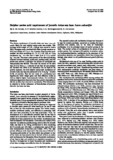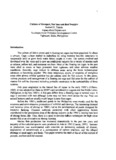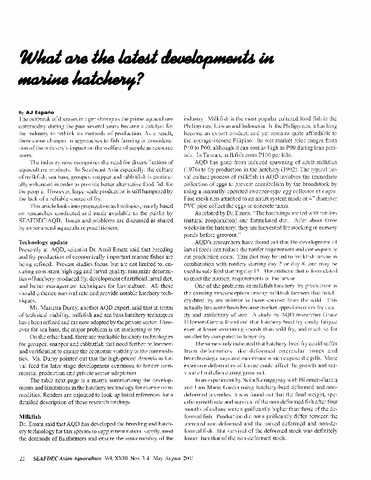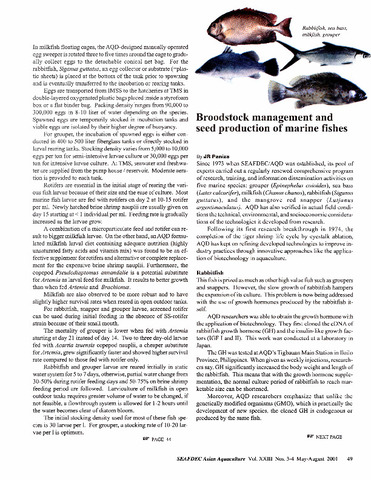Sulphur amino acid requirement of juvenile Asian sea bass Lates calcarifer
Share
Abstract
The dietary requirement of juvenile Asian sea bass Lates calcarifer for total sulphur amino acids was studied. Fish (average initial weight of 2.59 plus or minus 0.08 g) were reared in twelve 500 L fibreglass tanks provided with flow-through seawater at 26 degree C and salinity of 31 ppt for 12 weeks. They were fed semipurified test diets containing 6.2, 7.2, 8.1, 9.0, 10.8, or 12.6 g methionine/kg dry diet and a basal level of 3.1 g cystine/kg dry diet. The mean crude protein of the diets (containing defatted Peruvian fishmeal, squid meal, soybean meal, and free amino acid mixture to simulate the pattern of hydrolysed sea bass protein) was 46.02 %. The crude fat content of the diets was 10.51 % from a 1:1 mixture of cod liver oil and soybean oil. Survival was 100 % in all treatments. On the basis of the growth response, the total sulphur amino acid requirement of juvenile Asian sea bass was estimated to be 13.4 g/kg dry diet (2.9 % of protein). Fish fed low levels of L-methionine had significantly lower weight gains and feed efficiency ratios as well as slightly higher hepatosomatic indices. No nutritional deficiency signs were observed other than growth depression in fish fed on diets that were low in methionine. This information is valuable in further refinement of formulations of practical diets for the Asian sea bass.
Suggested Citation
Coloso, R. M., Murillo-Gurrea, D. P., Borlongan, I. G., & Catacutan, M. R. (1999). Sulphur amino acid requirement of juvenile Asian sea bass Lates calcarifer. Journal of Applied Ichthyology , 15(2), 54-58. https://doi.org/10.1046/j.1439-0426.1999.00123.x
Subject
Taxonomic term
Collections
- AQD Journal Articles [1248]
Related items
Showing items related by title, author, creator and subject.
-
Culture of grouper, sea bass and red snapper
Toledo, Joebert D. (University of the Philippines Aquaculture Society, Inc., 2001)Marine fish production has increased dramatically in the past ten years and majority of the cultured species were produced in Asia in 1992. Increase in production was accompanied with concerns on increasing outbreak of ... -
What are the latest developments in marine hatchery?
Españo, A. J. (Aquaculture Department, Southeast Asian Fisheries Development Center, 2001) -
Broodstock management and seed production of marine fishes
Paniza, J. R. (Aquaculture Department, Southeast Asian Fisheries Development Center, 2001)




